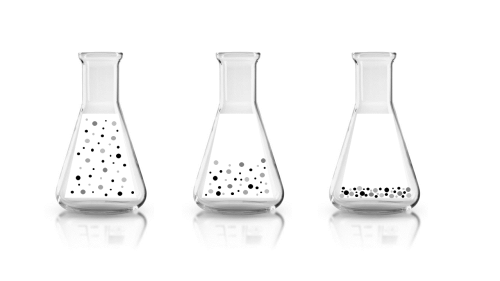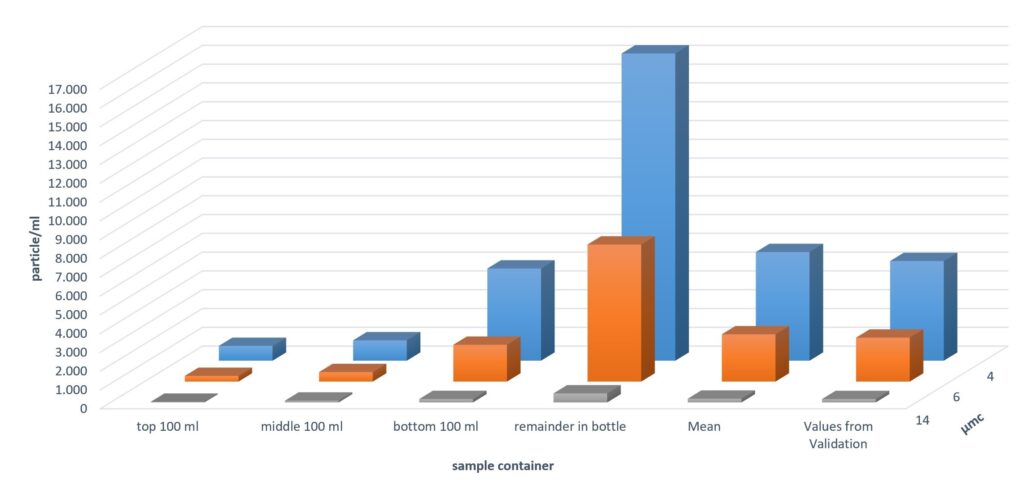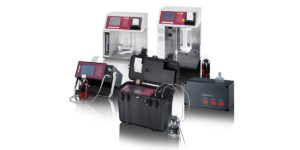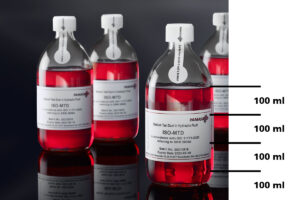Question:
Why do samples have to be prepared before particle measurement?
Fact:
Without the correct preparation, you get falsified measurement results!
The preparation of a sample is particularly important if the liquid is taken in several steps or only partially, because otherwise the result for the total volume is no longer meaningful.
In any liquid, particles settle in the lower part of the sample due to gravity. Furthermore, particles can stick together or agglomerate, thus producing incorrect counting results.

Verification:
To prove the above statement, the following experiment was performed in the PAMAS laboratory using the PAMAS SBSS master particle counter instrument:
- Comparison Parameters: Measurement of two bottles of validated secondary calibration suspension (MTD), which were left undisturbed on the shelf for an extended period of time
- Withdrawal of samples from: Bottle 1 without preparation, Bottle 2 with preparation
- Procedure for Bottle 1: Transfer of the top 100ml from the MTD bottle into the first sample container, transfer of the next 100ml to the second sample container and transfer of the third 100ml to the third sample container
The remaining volume was left in the original bottle. - Procedure for Bottle 2: Preparation was carried out by shaking the sample vigorously for 1 min, followed by placing the bottle in an ultrasonic bath for 5 min. It is then placed on a bottle roller for 15 min and after that degassed by applying vacuum. The procedure for providing the three separate 100ml samples was carried out using the same methodical steps as with Bottle 1.
- Start of the measurement of the individually prepared sample containers with the following parameters: 5ml pre-run and 7x10ml measurement
Addition:
The transfer of volumes was done with the help of a syringe assembly.
Each particle measurement was performed with individually prepared subsamples to ensure uniform comparison values could be obtained.
The volumes in this measurement trial were chosen so that as much as possible of the total volume of the two original bottles was counted.


Conclusion:
In the case of Bottle 1, without the preparation of the bottle before the transfer of the individual volumes, inconsistent particle counting results are obtained depending on the volume segment used for the measurement. A statement about the composition of the total volume would be incorrect and misleading (Fig. 1).
In the case of Bottle 2, the individual measurement results of the samples show that if the bottle is correctly prepared before taking the samples, the particle counts remain constant, regardless of which part of the bottle is measured. A statement about the composition of the total volume would correct (Fig. 2).
A point to note is that the average number of particles recorded for both MTD bottles is very similar. This proves that the particle counter has counted precisely in all measurements and that all particles were counted despite the removal of partial volumes.
This trial is applicable for all fluid sample applications including laboratories in which various examinations are carried out whether it be in a total sample or partial volume.
For more detailed questions on the subject of sample preparation, please contact us at sales@pamas.de.




